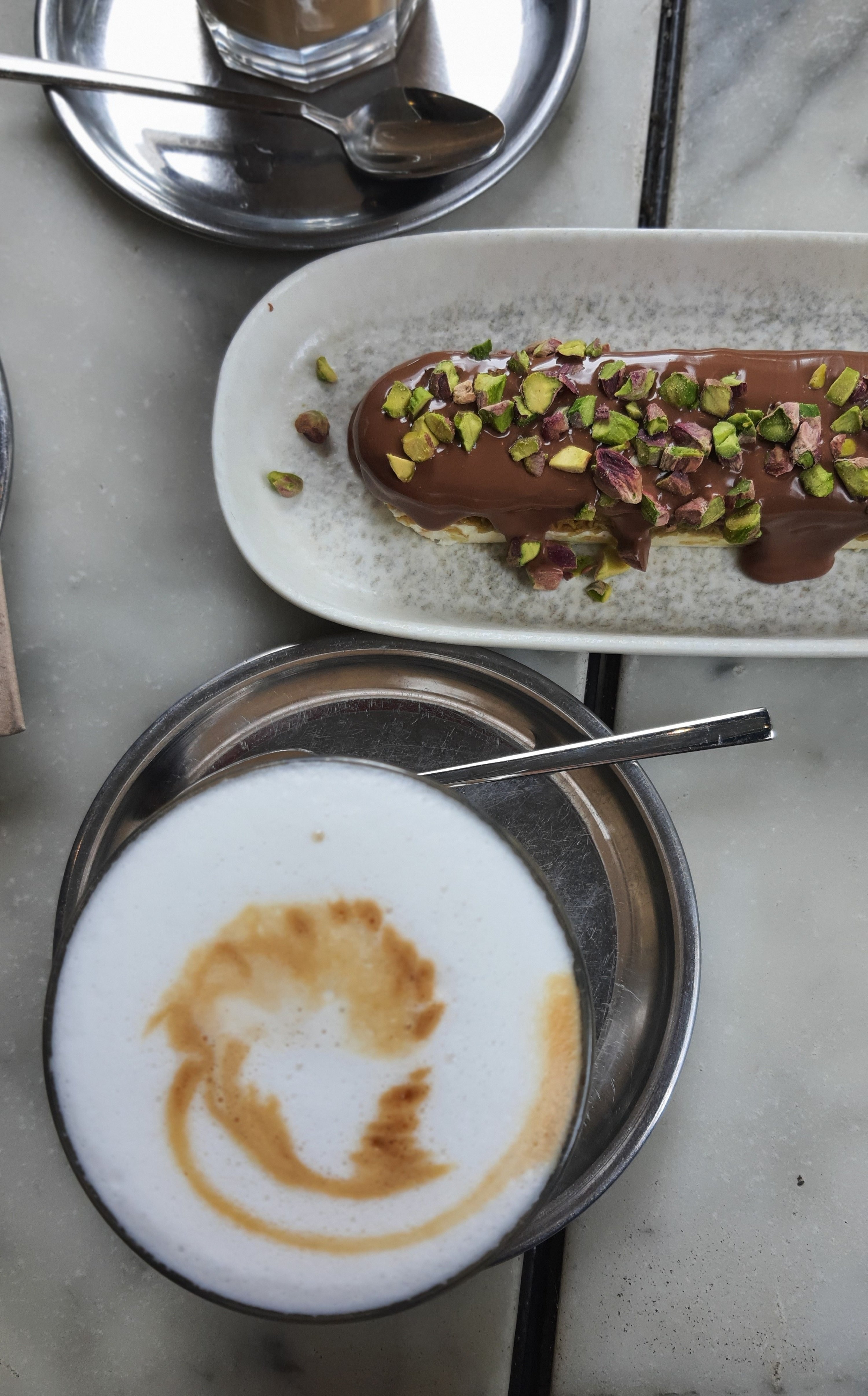© Turkuvaz Haberleşme ve Yayıncılık 2026
Trends often come and go before we realize they have become exactly that. And with social media, this cycle of change seems to be ever-faster.
At times it can be one color that is dominating everything, such is the case of burgundy in fashion circles this autumn. Similarly, the growing popularity of Adidas' Samba shoes, both globally in Türkiye, can be mentioned as another typical example of notable trends in the recent period.
While such trends closely related to fast fashion can usually last for one season or a couple of months, one particular trend that has outpaced most similar trends lately is one closely related to food (well, better said, chocolate).
I believe you can all guess now what I would be talking about.
The phenomenon of Dubai chocolate captivated attention en masse in recent months – that a number of distinguished brands started producing their own variety of product.
At the beginning, I may say I did not pay that much attention to the fact but after watching videos of crowds of people in Istanbul waiting to get their piece of this delight, and not even at that cheap price it intrigued me slightly more.
Probably you have come upon somewhere on a story of a woman entrepreneur who is credited for making the original Dubai chocolate. I won't go there, but would rather try to focus on the power of social media, especially when it comes to promoting food and travel content.
Some of the most popular food influencers, promoting their content on platforms such as Instagram and TikTok have millions of followers and can easily reach many more with short reel clips often portraying interesting cooking techniques and displaying tempting combinations like strawberry and melting chocolate or lemon cake with the background of Portofino, for example.
Renowned chefs like Jamie Oliver and Gordon Ramsey had over 10 million and 18 million followers on Instagram as of early November, but lately, there are dozens of other culinary artists and food influencers specific for certain regions around the world who consistently produce their content while taking in consideration trends such as Dubai chocolate for instance.
In this way and with a rising count of posts on the same hashtags, certain trends are born and spread.
Hashtag #dubaichocolate had over 93,000 posts when I last checked on Instagram, featuring posts from Kinder Bueno pistachio cones to chocolate sold in Ohio in the United States. The craze is really unquestionable.
On top of that, what surprised me the most is that some leading brands recognized for their prestige and long tradition when it comes to chocolate production have embraced this trend as well.
Take a second and think of Lindt. You would maybe remember that amazing museum dubbed "heaven of chocolate," but what if I told you that even Lindt made a try on Dubai chocolate bar?
Calling it "creamy pistachio goodness," this Swiss iconic brand recently published a video depicting how it is being made together with its fine milk chocolate on its official social media account – and is just one of many.
Having its smooth Lindor chocolate balls, Christmas bunnies, and mini pralines, the brand late in September also launched a new "Excellence Pistachio" chocolate tablet.
And here we come to one of key ingredients of the viral delicacy that Dubai chocolate turned out to become. One word – pistachio.
Already used in some of the finest and globally famous Turkish desserts like baklava and kadayıf, pistachios according to classification belongs to the family of Anacardiaceae, commonly known as the cashew family, whose members also include mango and sumac.
Türkiye, which is a homeland to many nut types is also known to be one of the top producers of pistachio along with the U.S., Iran and other neighboring countries like Greece and Syria.

Having said this, it is not surprising that this new trend took Türkiye by storm, captivating many tastebuds.
Some Turkish firms like Ülker have even launched their own versions of Dubai chocolate that come at quite good prices of around TL 75 to 80 (around $2.2 to $2.35) compared to some that are being sold for TL 400 or TL 500.
Media also added some buzz to it in recent weeks, while as I said the impacts of influencers can never be neglected.

Even Refika Birgül, who has a popular YouTube channel "Refika'nin Mutfağı" ("Refika's Kitchen") posted a couple of recipes on Instagram, promoting somewhat healthier versions such as "Dubai chocolate cheesecake."
Just in recent days, a top Turkish daily also cited soaring demand for pistachio-filled chocolate, "with both domestic consumption and exports expected to rise."
Meanwhile, some reports indicated that original Dubai chocolate would be sold in Germany at a price of as much as 15 euros ($16).
Having tried it myself I can say that a blend of kadayıf, chocolate and crispy pistachios is indeed a well-thought combination. Let's just see how long it lasts. For now, I may say this creamy green trend has a quite reasonable chance to stay with us for a little longer!
